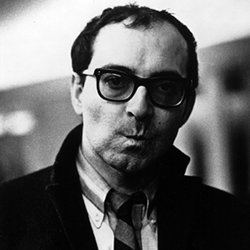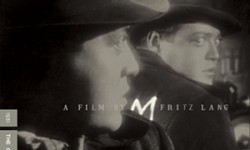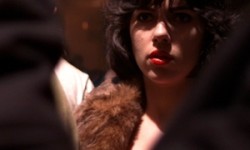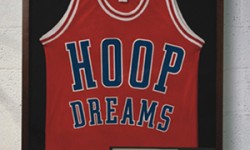
TIFF’s Endless Summer – The Birth of the Blockbuster: Die Hard, A Masterpiece in the Details

Editor’s Notes: The following review is part of our coverage for TIFF’s Endless Summer – The Birth of the Blockbuster which runs from August 30th to September 1st at TIFF Bell Lightbox. For more information on upcoming TIFF film series visit http://tiff.net and follow TIFF on Twitter at @TIFF_NET.
I could easily work my way through the plot of Die Hard in traditional review fashion, but is that what we really need at this point? Don’t we all know what happens in Die Hard? I would assume, if you weren’t at least aware of what the film is, essentially, you wouldn’t be reading material on film websites. I have decided to take a different approach and discuss what makes Die Hard the finest modern action picture of all time. Even as technology has advanced, nothing comes close to the power and cultural resonance in John McTiernan’s action opera. It is the first and, perhaps, the only true masterpiece of pure action. There are maybe a few others on either side of Die Hard that could fall under that heading, but none as withstanding as it has been. Even as sequels have been pushed out over the years – each varying in quality and purpose – the original Die Hard remains seminal.
Is there anything in modern action cinema as thrilling as John McClane leaping from the exploding Nakatomi rooftop with a fire hose wrapped around his waist?
But what sets it apart? There have been action films for decades now, some good and most not so much, so what is it about Die Hard? I say it’s the little things along the way that define the film as something beyond flat-faced bullets and bombs. The large aspects of the plot are indeed the draw of the picture; the steadfast determination of our hero John McClane, sneaking through Nakatomi Plaza trying to outsmart Hans Gruber and his gang of European terrorists looking to grab millions drives everything, and the action payoffs are magnificent even in this day of CGI overload and bloated budgets. Is there anything in modern action cinema as thrilling as John McClane leaping from the exploding Nakatomi rooftop with a fire hose wrapped around his waist? I would challenge anything you brought to the table. Those moments are the money shots that propel Die Hard as an action film. But the greatness lies in the details.

Christmas is the largest detail, if it makes any sense that a detail could be large. But Christmas fills the margins of Die Hard, from the opening title music (those jingling bells), to Run DMC’s “Christmas in Hollis,” to the small tabletop Christmas trees and lights, the Yuletide Season is everywhere, but nowhere directly in the story until the very end when McClane uses some packing tape to outwit Hans and save Holly. Placing the events during Christmas is a deft touch because while it gives significance to the sense of place within the film, it has helped define Die Hard culturally. I used to get chuckles when I said Die Hard was a Christmas tradition in my house; now, I see it being watched everywhere during the silly season. Adding Christmas also juxtaposes the brutality of the action with such delicate decorations and sentimentality that is commonplace during the holiday. It is the pulse of the film.
Right before things go south at the Christmas party, and Hans Gruber and his men take control, John and Holly have a spat that has clearly been carried over months of time apart and arguments on the phone. John never wanted Holly to leave New York to take the job, and their estrangement has stopped and started over time. “We had this conversation in July,” John exclaims. Aside from being a nice cultural statement on the working woman in the 80s, it also sets the stage for additional stress on John as he tries to save the day. Without this argument that never got resolved before the takeover, Die Hard would be without one of the most emotionally gripping scenes in the film. John, feeling all hope is lost, tells his police friend on the other line, Al Powell, to give Holly his apology. The desperation is palpable in the performance of Bruce Willis, and it carries substantial weight given the details in the argument early on.
Of course what makes Die Hard a fantastic action film is the explosions and one liners and gunfights, and the back and forth between Willis and Rickman (one of the finest action villains of all time). But what makes it stand out as a masterpiece? You can see that in the details.
And, of course, there is the small issue of being shoeless. This detail is set up immediately, in McClane’s conversation on the plane with a passenger who tells him to take off his shoes and socks and make fists with his toes. He just so happens to try this right about the time the terrorists take hold, leaving his feet bare the entire time. This very small detail adds so many moments to the picture overall, like his attempt to squeeze into a terrorists tiny shoes and his escape across a field of broken glass that bloodies his feet and leads to his desperate apology in the bathroom. This could have been a detail left out and perhaps the film would have had just as much success as it does today, but with this small but vital development in the film the stakes are raised and our hero is shown as even more fragile and desperate despite his tough attitude, his street smarts, and his determination.
Which leads me to John McClane himself, played by a then relatively unknown Bruce Willis. In the waning years of bicep blow ‘em ups starring Schwarzenegger and Stallone, who would embody the tough arrogance of a Reagan-era 80s, Willis’s McClane shifts the paradigm and represents something of an everyman in an extraordinary situation. That is what made him, and the film, so endearing, and what the sequels strayed from more and more each time out. Of course what makes Die Hard a fantastic action film is the explosions and one liners and gunfights, and the back and forth between Willis and Rickman (one of the finest action villains of all time). But what makes it stand out as a masterpiece? You can see that in the details.





















